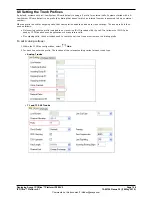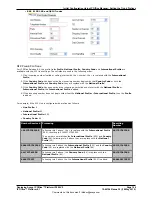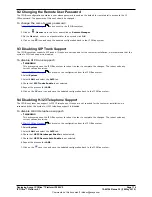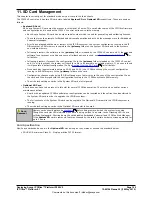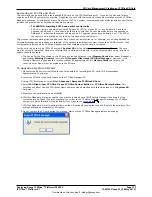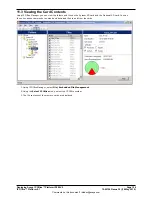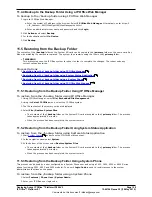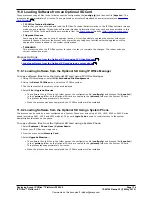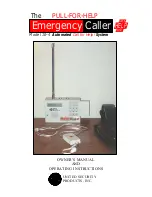
Deploying Avaya IP Office™ Platform IP500 V2
Page 122
15-601042 Issue 30j (18 May 2015)
IP Office™ Platform 9.1
Comments on this document? [email protected]
11.1 Booting from the SD Cards
When being powered up, the IP500 V2 control unit looks for a valid ip500v2.bin binary file to load. It does this using the
possible source below in the order shown, skipping to the next source if the file is not present or is not valid.
1. System SD card /primary folder.
2. The control unit's own internal non-volatile memory. Once a system has been installed, it uses its non-volatile
memory to keep copies of the configuration and system binary files it is using. These can be used to restore
operation during a system reboot. Note that though a system can boot from non-volatile memory, a System SD
card must still be present for correct system operation.
3. System SD card /backup folder.
4. Optional SD card /primary folder.
5. Optional SD card /backup folder.
6. If no file is found, the control unit will fallback to making BOOTP requests to the network. IP Office Manager can
respond the BOOTP request. See
Erasing the Operational Firmware
.
Once a valid ip500v2.bin file is found, the IP Office control unit will load that firmware. The source from which the control
unit binary file was loaded is then used to load further files.
Configuration File Loading
Having installed the necessary system firmware files as above, the IP500 V2 control unit requires a configuration file:
·
If the IP500 V2 booted using binary files from an SD card location, it looks for a valid configuration file in the
same location.
·
If a configuration file is present and valid, it is loaded.
·
If a configuration file is present but is not valid, load the configuration copy in its non-volatile memory if
present, else it assumes a default configuration.
·
If a configuration file is not present, use the non-volatile memory copy as above unless the reboot is as a
result of a default system command.
·
If the IP500 V2 booted using binary files from its non-volatile memory, it will also load the configuration copy from
that location.
·
It will indicate a boot alarm (see below).
·
It will attempt to restore the firmware file in the System SD card's /primary folder using the copy in its non-
volatile memory.
·
The normal boot up process of upgrading expansion module firmware does not occur. If the File | Advanced
| Upgrade command is used, only external expansion modules actually present in the system are listed for
upgrade.
Post Boot Operation
During normal operation, configuration and binary files sent to the System SD card /primary folder using IP Office
Manager are also written to the non-volatile memory.
If the system has booted from its non-volatile memory due to an SD card problem, it is still possible to upgrade the
ip500v2.bin file using the IP Office upgrade wizard.
184

